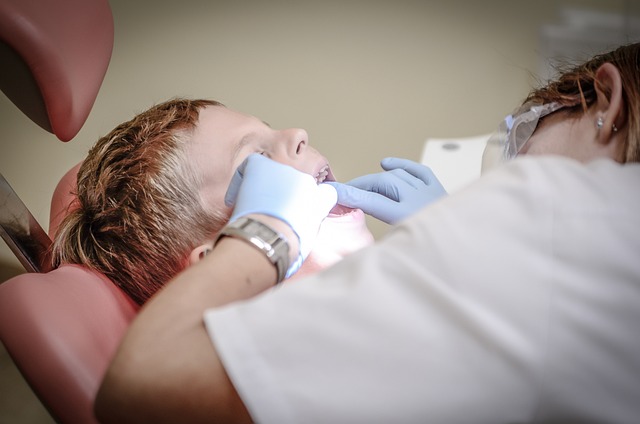Confused about whether veneers can be placed over your existing crowns? Don’t worry, we’ve got you covered. Get ready to uncover all the dental considerations you need to know.
1. Understanding the Relationship between Veneers and Crowns in Dental Treatments
Veneers and crowns are two commonly used dental treatments that can transform the appearance and functionality of your teeth. While both options can improve the overall aesthetic of your smile, they are used in different scenarios and offer distinct benefits. Understanding the relationship between veneers and crowns is crucial for determining which treatment is best suited to your specific dental needs.
Veneers:
– Veneers are thin, custom-made shells that are bonded to the front surface of your teeth. They are typically used to address cosmetic concerns such as chipped, stained, or misaligned teeth.
- Veneers are made from porcelain material, which closely resembles the natural color and texture of your teeth for a seamless and natural-looking result.
- The process of getting veneers involves removing a small amount of enamel from the tooth’s surface to ensure a proper fit.
- Veneers are an ideal choice for those looking to enhance their smile without undergoing extensive dental work.
Crowns:
– Unlike veneers, crowns cover the entire tooth, providing both aesthetic and structural support.
– Crowns are typically recommended for teeth that are severely damaged, decayed, or weakened by root canal therapy.
- Crowns can be made from a variety of materials, including porcelain, ceramic, metal, or a combination of these materials.
– The process of getting a dental crown involves reshaping the tooth to create space for the crown, which is then securely bonded in place.
- Crowns offer exceptional durability and strength, making them an excellent solution for restoring the function and appearance of damaged teeth.
2. Exploring the Possibility: Can Veneers be Placed over Existing Crowns?
When it comes to veneers, one common question that arises is whether they can be placed over existing crowns. The answer to this question depends on a few factors.
1. Condition of the existing crowns: If the crowns are in good condition, with no signs of damage or wear, it may be possible to place veneers over them. The crowns should have proper fit and alignment, and there should be no issues with the underlying teeth.
2. Type of crown material: Another important consideration is the type of material used for the crowns. Veneers are typically made from porcelain or composite resin, and these materials may not bond well with certain types of crown materials such as metal. It is crucial to consult with a dentist who can evaluate the compatibility between the veneers and existing crowns.
3. Desired cosmetic result: Finally, the aesthetic expectations of the patient play a significant role in determining whether veneers can be placed over existing crowns. If the patient is looking for a significant change in the appearance of their teeth, replacing the existing crowns with new ones may be a better option.
3. The Key Dental Considerations: Are Veneer Placement and Crown Compatibility Feasible?
When considering dental procedures such as veneer placement or crown compatibility, there are key factors that need to be taken into account. These factors will determine the feasibility and success of these treatments. Here are the key dental considerations to keep in mind:
- Candidacy: Not everyone is a suitable candidate for veneer placement or crown compatibility. Dentists will assess your oral health, tooth structure, and overall dental condition to determine if you are eligible for these procedures.
- Tooth Preparation: Veneer placement requires minimal removal of the tooth enamel, while crown compatibility may involve significant tooth structure reshaping. The condition of your teeth and the level of preparation required will play a crucial role in determining the feasibility of these treatments.
- Aesthetics: Veneers are primarily used for cosmetic purposes, improving the appearance of chipped, stained, or misaligned teeth. Crowns, on the other hand, can improve both aesthetics and function. Dentists evaluate whether veneer placement or crown compatibility will achieve the desired aesthetic outcomes for your smile.
- Oral Health: The health of your teeth and gums is essential for the success of any dental procedure. Veneer placement and crown compatibility require a healthy oral environment, free from conditions like gum disease or tooth decay. Any underlying oral health issues must be addressed before considering these treatments.
By considering these key dental factors, you can determine whether veneer placement or crown compatibility is a feasible option for you. Remember, consulting with a qualified dentist is crucial in making an informed decision and achieving optimal outcomes for your dental health and aesthetics.
4. Decoding the Dental Conundrum: Factors Influencing Veneer Placement over Crowns
When it comes to deciding whether to place veneers over crowns, several factors need to be considered in order to achieve the best outcome. Understanding these key factors can help dentists make informed decisions and provide the most effective treatment for their patients.
1. Tooth condition: The condition of the underlying tooth plays a crucial role in determining whether veneers can be placed over crowns. If the tooth has significant damage, decay, or structural issues, it may require a crown to restore its function and strength before veneers can be considered. However, if the tooth is healthy and only requires cosmetic improvement, veneers can be a suitable option over crowns.
2. Alignment and bite: Another important factor to consider is the alignment of the teeth and the patient’s bite. Veneers are primarily used to improve the appearance of teeth, while crowns are usually recommended for strengthening and restoring damaged teeth. If the patient’s bite is misaligned or there are issues with the occlusion, it may be more appropriate to opt for crowns rather than veneers to ensure proper functionality and long-term stability.
5. The Dental Expert’s Perspective: Evaluating the Viability of Veneers on Crowns
When it comes to evaluating the viability of veneers on crowns, it’s important to consult a dental expert who has extensive knowledge and experience in cosmetic dentistry. Veneers and crowns are both popular dental treatments that are designed to improve the appearance of teeth, but they serve different purposes and have distinct characteristics.
A dental expert can assess your specific dental needs and provide a professional opinion on whether veneers on crowns are a suitable option for you. Here are a few key factors that a dental expert will consider:
- Tooth Structure: The condition of your tooth structure plays a crucial role in determining the suitability of veneers on crowns. The dental expert will evaluate whether there is enough tooth structure available to support the placement of veneers on crowns.
- Bite Alignment: Proper bite alignment is essential for the long-term success of veneers on crowns. The dental expert will assess your bite to ensure that veneers on crowns will not cause any interference or misalignment.
- Oral Health: Good oral health is necessary before undergoing any dental treatment. The dental expert will examine your oral health, including the presence of gum disease or tooth decay, to determine if veneers on crowns are a viable option for you.
When considering dental treatments, it is crucial to weigh the pros and cons of each option. Applying veneers over crowns has both advantages and limitations that should be taken into account.
Advantages:
- Veneers provide a more conservative approach: Unlike crowns, which require the removal of a significant amount of tooth structure, veneers only require a minimal removal of enamel. This makes veneers a preferable option especially if you have healthy teeth.
- Veneers offer a natural aesthetic appeal: Veneers are crafted to match the color, size, shape, and translucency of your natural teeth, resulting in a seamless and natural appearance.
- Veneers offer versatility: They can address various imperfections such as discoloration, gaps, minor misalignment, and chipping. This makes them a versatile choice to achieve a perfect smile.
- Longevity: With proper care and maintenance, veneers can last for many years, providing a long-lasting improvement to your smile.
Limitations:
- Irreversible procedure: Once veneers are applied, the process is irreversible. It is essential to discuss your expectations and carefully consider the decision before proceeding.
- Potential for tooth sensitivity: Temporary tooth sensitivity may be experienced immediately after the procedure, but it usually subsides within a few days. However, some individuals may experience increased sensitivity.
- Cost: Veneers are generally more expensive than crowns due to the personalized craftsmanship involved. It is important to consider your budget when deciding between the two options.
- Not suitable for severely damaged teeth: Veneers are not recommended for teeth with excessive decay or structural damage. In such cases, crowns may be a more suitable solution.
7. A Step-by-Step Approach: How Veneers can be Placed on Existing Crowns
Veneers are an excellent option for enhancing the appearance of your smile. But what do you do if you already have existing crowns? With a step-by-step approach, veneers can be successfully placed on top of existing crowns, providing a seamless and natural-looking result.
The process begins with a thorough evaluation of your current dental situation. This includes assessing the condition of your existing crowns and determining if they are structurally sound. If any adjustments or modifications are needed, our skilled dentists will ensure that your crowns are prepared accordingly. Once the crowns are ready, a thin layer of enamel is conservatively removed from the front surface to create space for the veneers.
Next, precise impressions of the prepared crowns and surrounding teeth are taken. These impressions serve as a blueprint for creating custom veneers that will fit perfectly over the existing crowns. The veneers are meticulously crafted to match the color, shape, and size of your desired smile, providing a natural and harmonious appearance. Once ready, the veneers are bonded onto the prepared crowns using a strong dental adhesive.
With this step-by-step approach, veneers can be placed on existing crowns seamlessly and effectively. Whether you want to address stained, chipped, or misaligned teeth, this treatment option can give you the smile you’ve always dreamed of, even if you already have crowns in place.
8. Navigating the Success Rate: Examining the Longevity and Durability of Veneers over Crowns
When it comes to dental treatments, both veneers and crowns are popular options for improving the appearance of teeth. However, understanding their longevity and durability is crucial in making an informed decision. In this section, we will examine the success rates of veneers and crowns, providing you with valuable insights to help you navigate your dental journey.
Veneers: Veneers are thin porcelain shells that are custom-made to fit on the front surface of teeth. Their main advantage is their ability to enhance the aesthetic appeal of your smile by improving the color, shape, and size of your teeth. While veneers are known for their natural-looking results, their durability is equally impressive. With proper care and maintenance, veneers can last up to 10-15 years or even longer, making them an excellent long-term investment. Additionally, veneers offer a host of benefits, including stain resistance, gum tolerance, and minimal tooth alteration. It’s important to note that the longevity of veneers greatly depends on factors such as oral hygiene, biting forces, and
Crowns: Crowns, also known as dental caps, are tooth-shaped coverings that encase the entire visible portion of a tooth. They are typically made from ceramic, porcelain fused to metal, or metal alloys. Crowns are primarily used to restore damaged teeth, strengthen weak teeth, and improve overall tooth functionality. While they may not match the natural appeal of veneers, crowns are extremely durable and can last anywhere from 10-15 years, sometimes even longer. With proper oral care, regular dental visits, and avoiding excessive biting forces, your crowns can maintain their functionality and appearance for an extended period. It’s worth mentioning that crowns require a more significant removal of tooth structure compared to veneers and are often recommended for teeth with extensive damage.
When it comes to dental restorations, understanding the interaction between veneers and crowns is essential in achieving a seamless and harmonious result. Both veneers and crowns are popular options for improving the aesthetics and functionality of teeth, but their different materials can have a significant impact on the final outcome.
One key consideration is the material compatibility between veneers and crowns. While both can be made from various materials such as porcelain, zirconia, or metal alloys, it is crucial to ensure that the materials used for veneers and crowns are compatible. Using incompatible materials can lead to discoloration or uneven wear over time, compromising the overall esthetics of the smile. Your dentist will have the knowledge and expertise to guide you in selecting the appropriate materials for your specific case, ensuring long-lasting harmony between your veneers and crowns.
10. Expert Tips and Advice: Guidance for Patients Seeking Veneers on Crowns
When it comes to enhancing your smile with veneers on crowns, seeking the guidance of experts is crucial. To ensure the best results and a long-lasting outcome, here are some expert tips and advice for patients considering this cosmetic dental treatment:
-
- Choose a reputable and experienced dentist or prosthodontist who specializes in cosmetic dentistry.
- Prioritize a detailed consultation where the dentist evaluates your oral health, discusses your desired outcome, and explains the veneer procedure in detail.
- Collaborate with your dentist to select the most appropriate type of veneers for your specific needs, such as porcelain or composite veneers.
- Focus on maintaining excellent oral hygiene before and after the procedure to prolong the lifespan of your veneers.
- Consider your facial features, complexion, and desired tooth shade when selecting the color and shape of your veneers.
Furthermore, it is essential to have realistic expectations about the treatment. While veneers on crowns can dramatically improve the appearance of your teeth, they cannot address underlying dental issues, such as gum disease or tooth decay. It is crucial to address any existing oral health issues before proceeding with veneers. Additionally, be prepared for the process to take multiple appointments, including the initial consultation, tooth preparation, and final placement of the veneers.
By following these expert tips and guidance, you can confidently navigate the process of seeking veneers on crowns. With a skilled dentist and proper care, you can achieve a beautiful, natural-looking smile that can boost your self-confidence and transform your overall appearance.
Conclusion
In conclusion, while veneers can be placed over crowns in some cases, careful consideration is necessary. Factors like crown condition, bite alignment, and aesthetics should be evaluated by a knowledgeable dentist. Ultimately, seeking professional advice is crucial to ensure the best outcome for a beautiful, functional smile.






